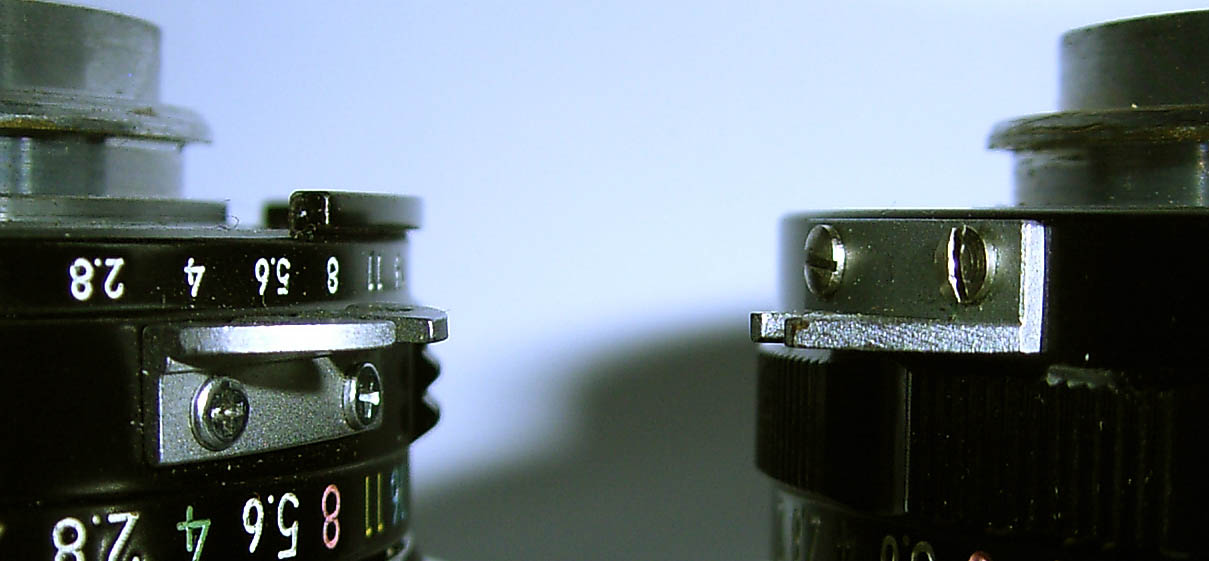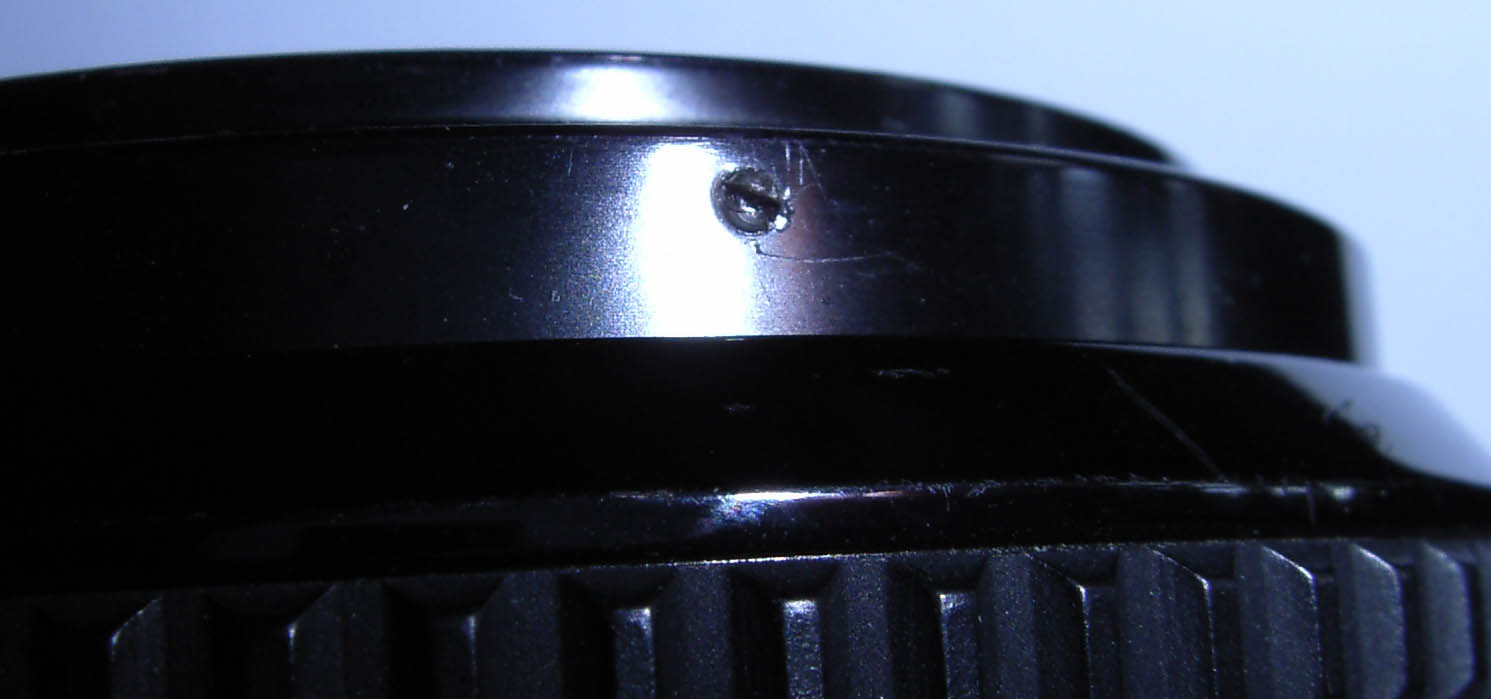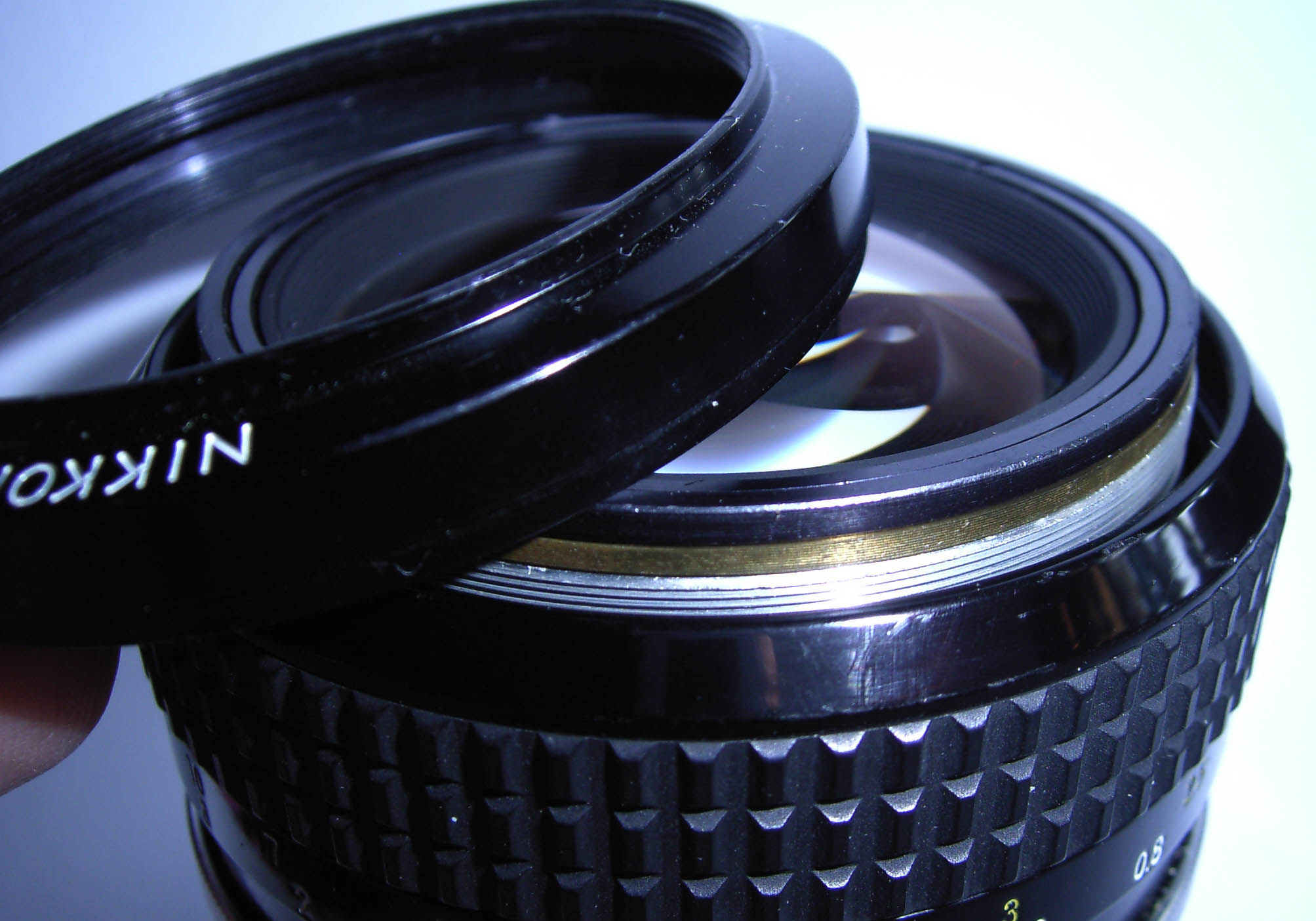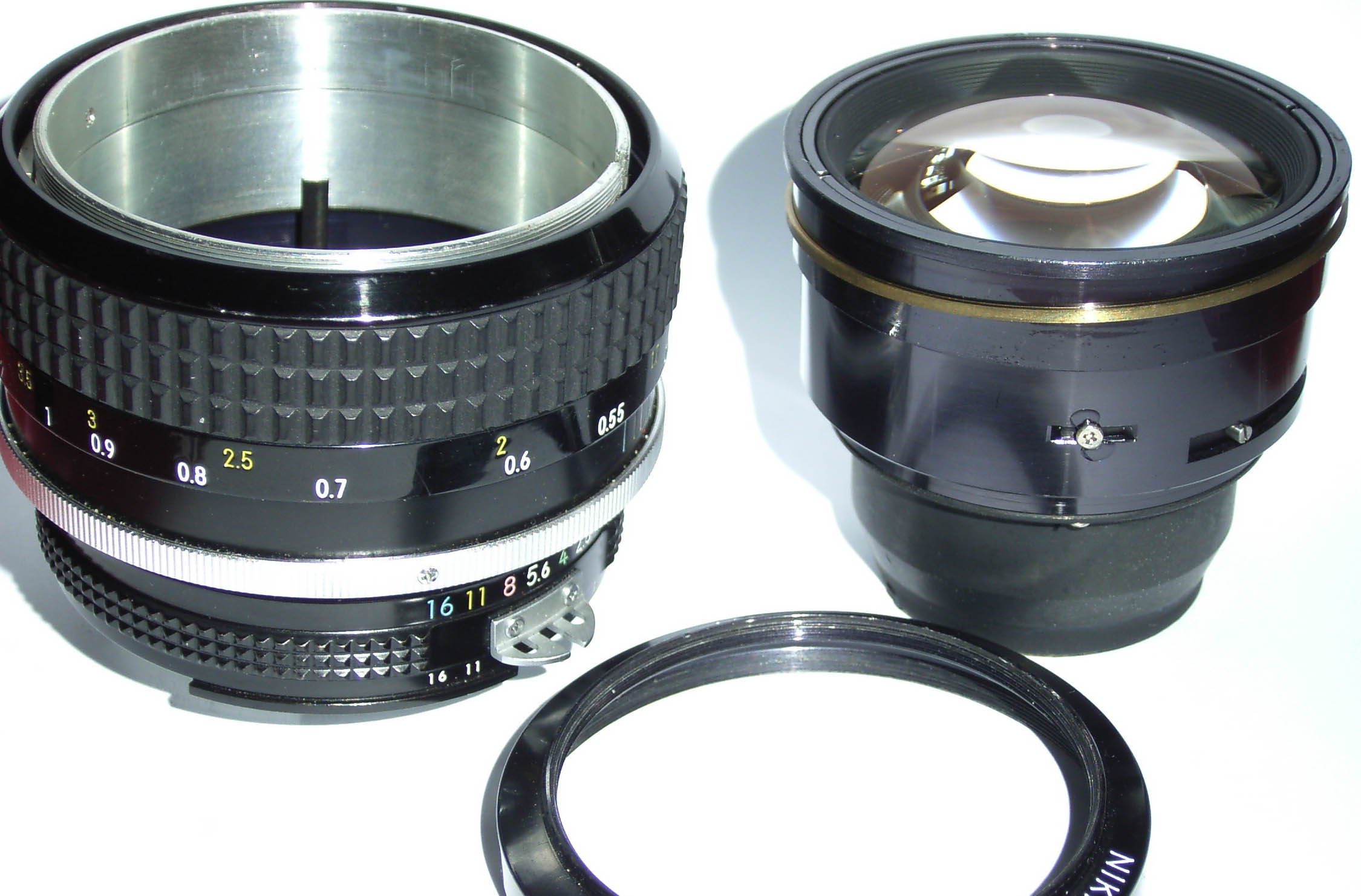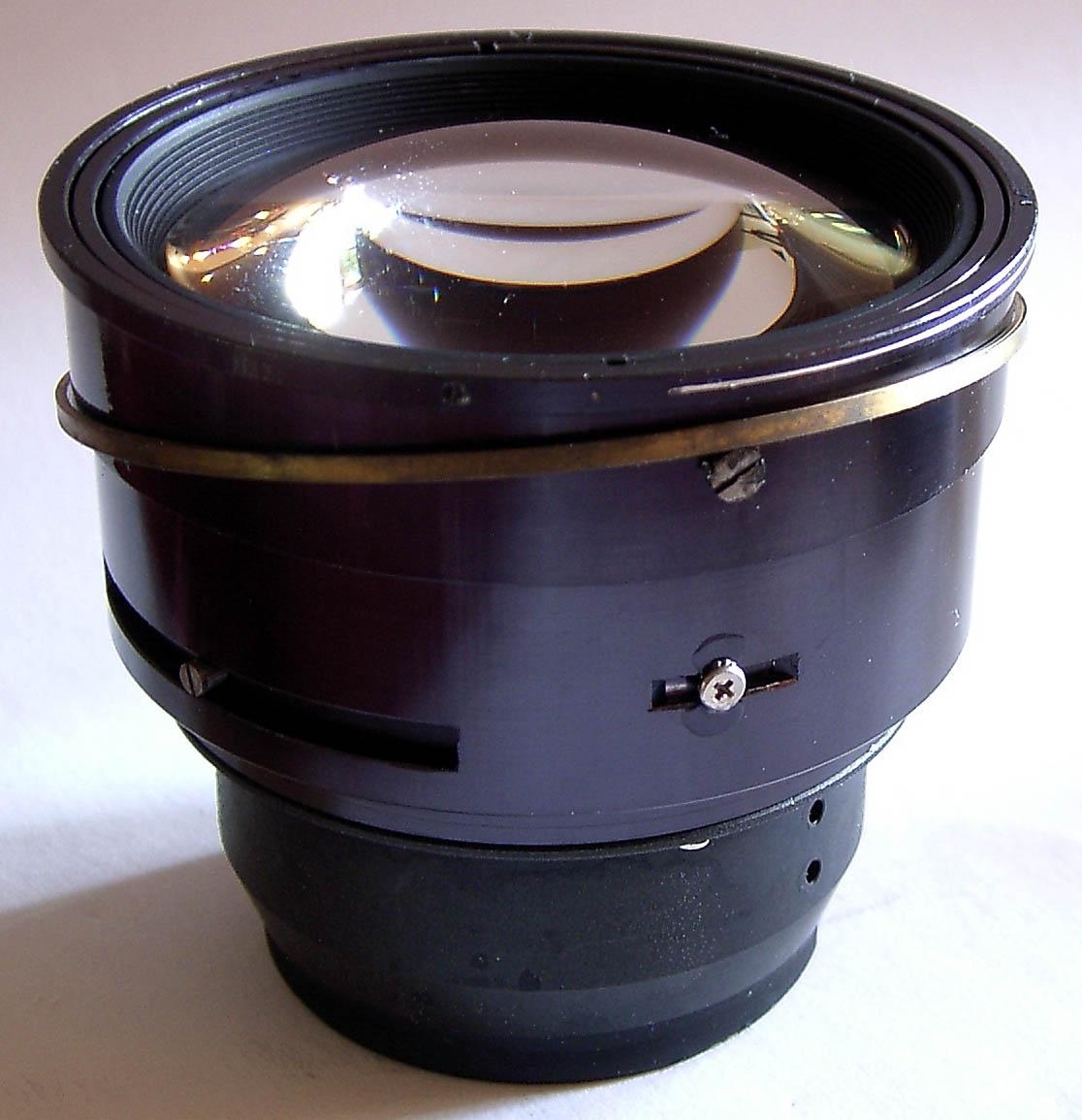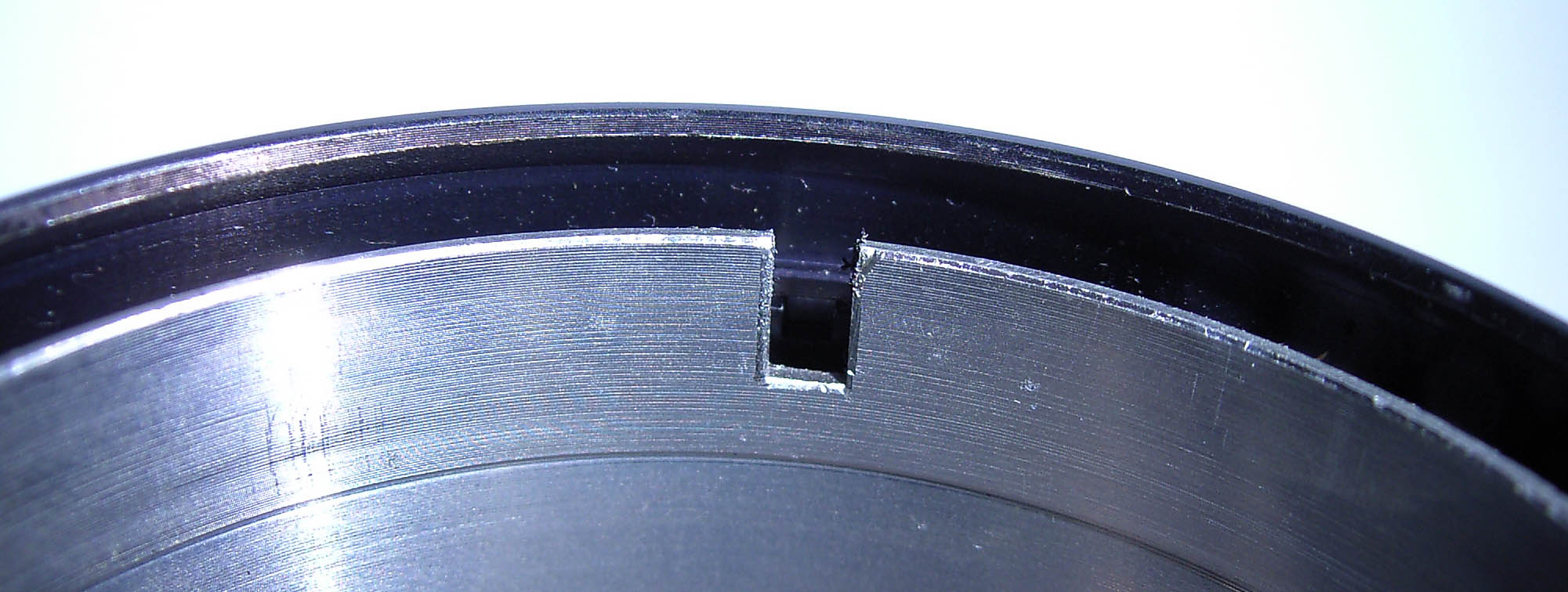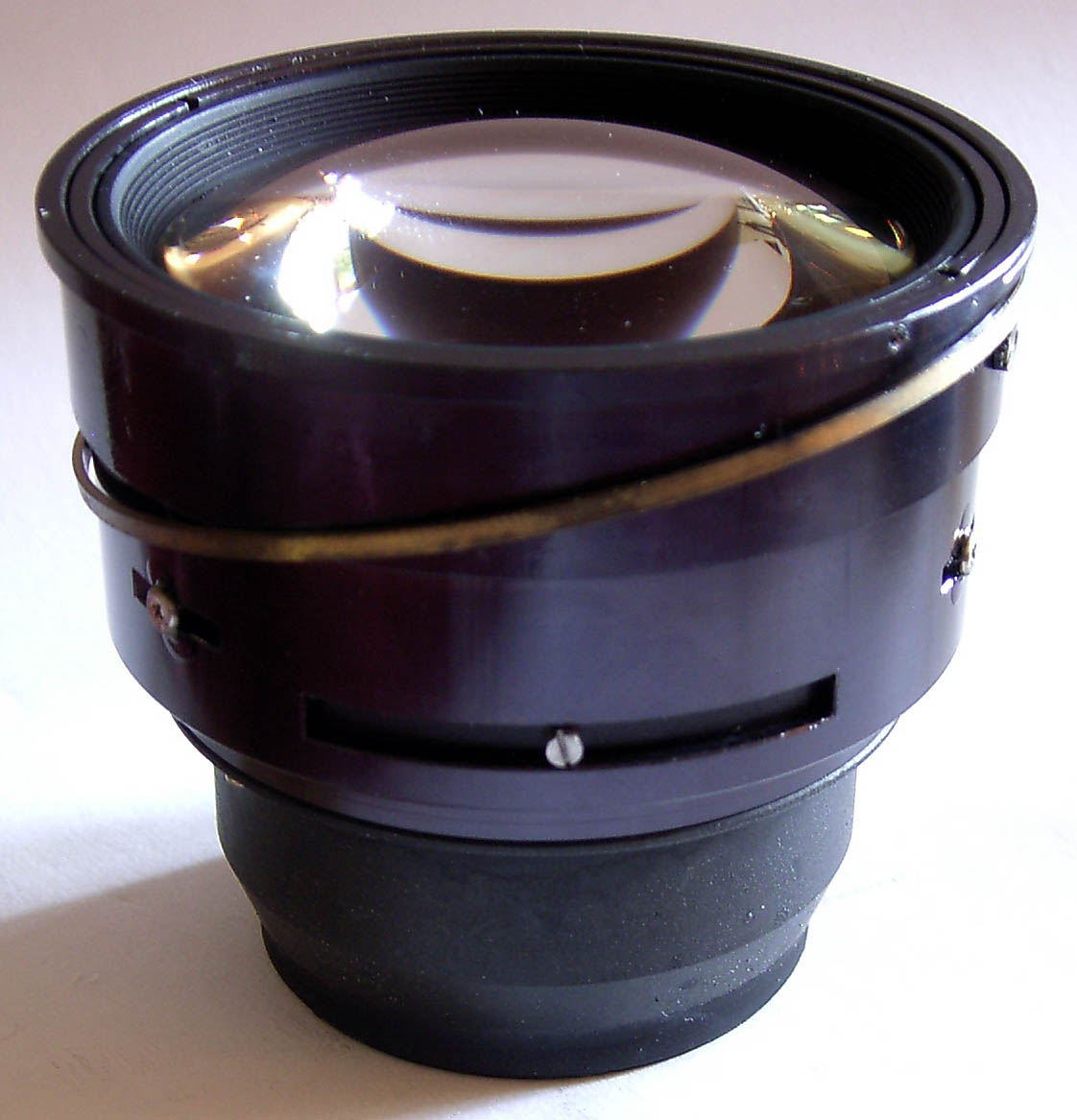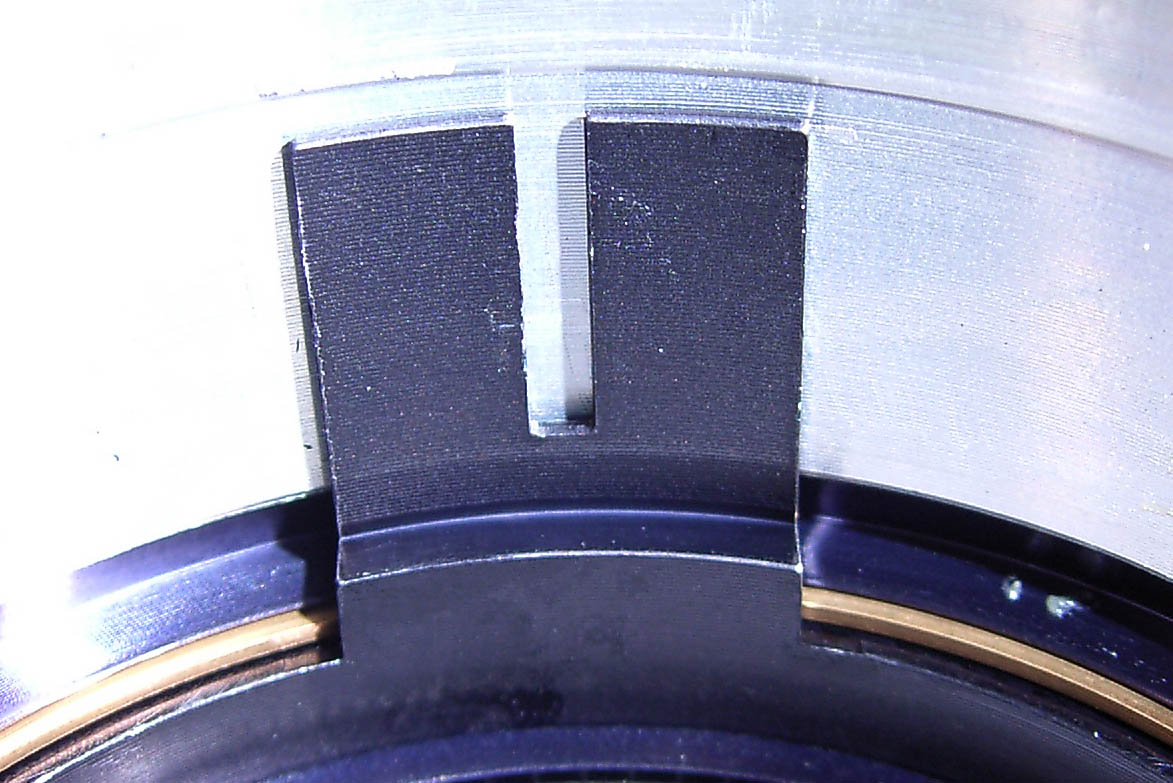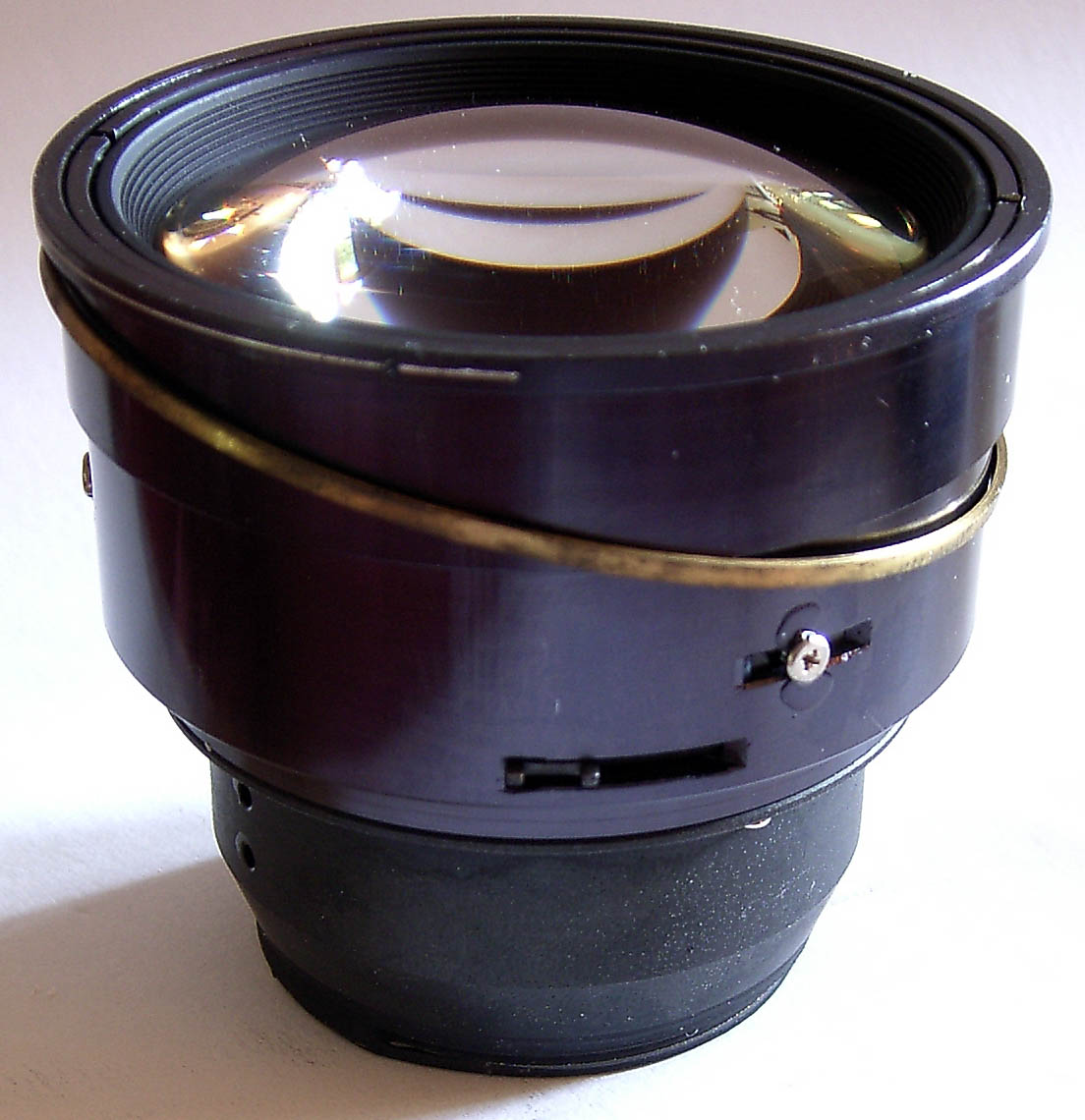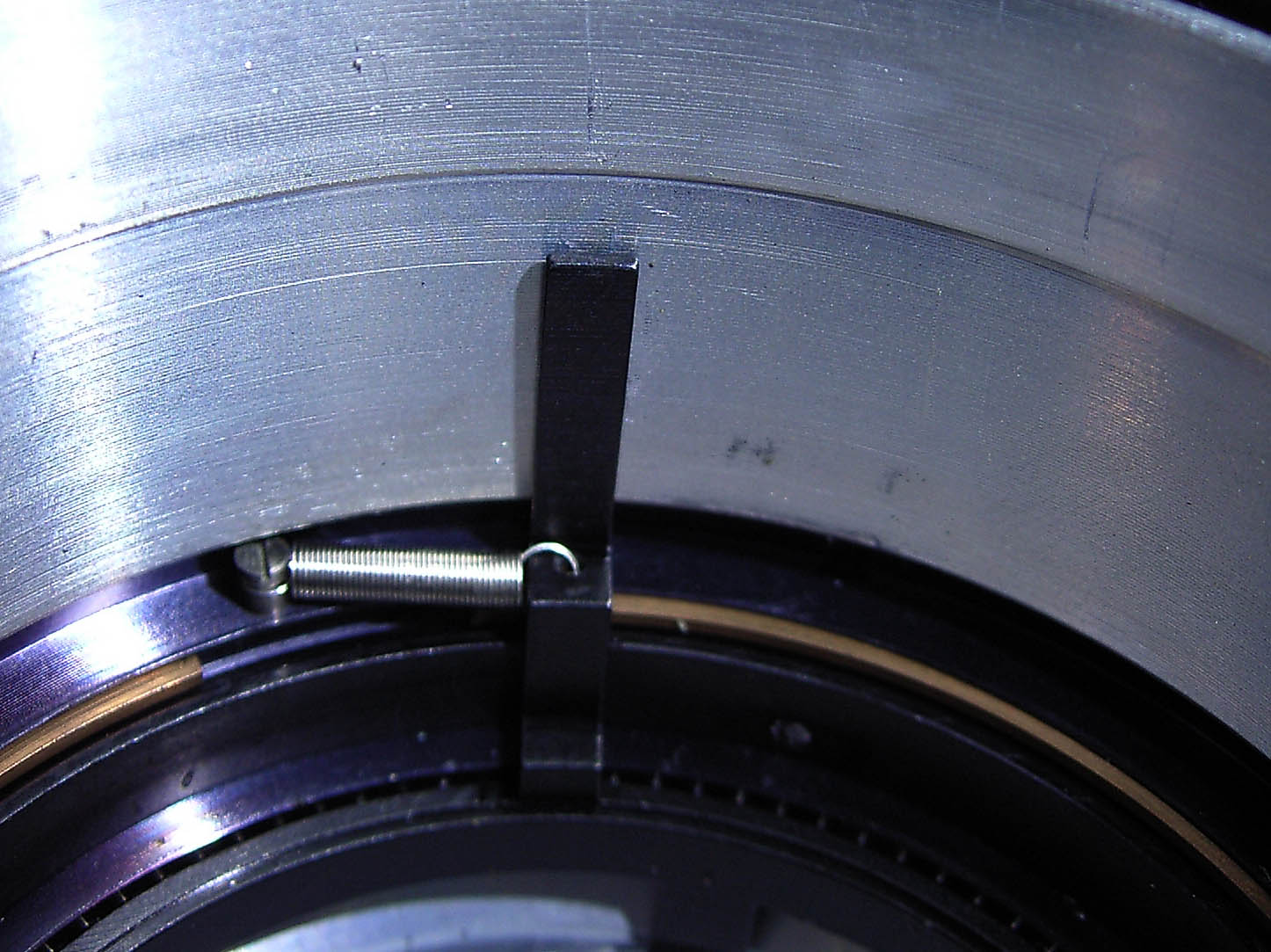Maintenance and repair of a standard SLR Nikkor lens
Again: take care, be patient and use the best tools!(the author is not responsible for any damage, loss, divorce or quarrels)
The very first Nikkor SLR lenses with an F-lens mount will only fit the older SLR cameras, like the Nikon F, Nikon F2 and various Nikomat/Nikkormat bodies. In 1977 Nikon introduced a modified lens mount to enable aperture indexing (AI). To fit older lenses on modern SLR bodies Nikon supplied AI conversion kits to camera dealers and repairmen (not to photographers). Unfortunately however not all lenses can be converted. Most older lenses with a triangular fork can't be converted as the aperture ring has a thread and has to be unscrewed. Later versions - with a rounded fork - have a removable aperture ring. Just unscrew the screws in the back plate, lift it off and lift off the aperture ring. Some aperture rings do have a set screw at their side. And not all screws in the back plate are just there to fasten that plate. They may hold something (spring etc.) under it. It often occurs that some screws in the back plate are/were given some glue to keep them in place. It will be difficult to unscrew them, also because those screws are rather soft. In such a case it may be of help to heat the screw up with a soldering bolt.
!! Be aware that the triangular and rounded closed fork are mounted on the ring with both screws faced to the camera, while the newer (AI) open fork is placed the other way round on the AI-ring!! BTW: an AI/S ring doesn't exist! Have a look at this site for details about what conversion kit will fit which lens.
Most older manual focus Nikkor lenses with the standard 52 mm. filter thread can be opened by unscrewing (counterclockwise = ccw) the chrome or black front (name) ring. Most rings are fixed by a set screw at the side see above). To find that (tiny) screw the lens has to be focused on its shortest possible distance. Longer lenses may have more than one set screw. When that ring has been unscrewed the entire lens element block may come out the lens body by catching it with your hand. Later versions have a black name ring inside the filter ring, which can be unscrewed wit a rubber stop (be careful not to touch the front element!). Auto focus lenses and zoom lenses are difficult to open. You need a repair manual and certain tools. A good source for repair manuals is the site www.craigcamera.com , once set up by John S. Craig (1943-2011) and maintained by his widow. Below a Nikkor-S 1.2/55 mm. will be disassembled. Many other lenses with the same shape or body can be opened as this one.
After removing the little set screw the front/name ring can be unscrewed (ccw). In between the black outer ring and the aluminum helical ring inside a tiny drip of the finest oil might smoothen focusing. When you - now - take the whole lens body upright in your left hand and turn it upside down the entire lens block will come out. Below you'll see the lens body, the lens block and the front ring.
To put the lens block back into the lens body three important connectors has to fit. One is the screw on the top edge of the lens body, number two and three are the aperture connectors - see below!
The large screw on the top side under the copper ring has to fit in the slot inside the lens
The screw in the slot, which is the aperture stop screw, has to fit the slot on the right
The little fork has to fit the latch on the right. Putting back the lens block is a bit of a puzzle, asking patience! Note: When putting back the set screw on the side of the name ring be sure that that screw is driven far enough into the ring, as - if not - it may hinder focusing!! The lens block consists of two large parts hold together by some (here three) screws. If you loosen these screws the two parts of the lens block can be taken apart. This enables you to get to the aperture blades in most cases. Before unscrewing the three screws you have to mark the position of both lens block half. It is very important to put both half's back exactly as they should/were! If you do not place them back as stated you will have problems (especially with lenses with a large rear element) with the aperture lever. When looking carefully at lens blocks you will notice that each element is hold by a ring. If you want to remove an element you'll need special tools and a suction cup. Most rings are made of a metal but can be relatively soft (aluminum). When putting back an element wear gloves to avoid finger prints on the elements. And some elements are made of special - often very soft - glass, or have a sensitive coating. Never use alcohol and/or acid containing fluids for cleaning! Beware of dust getting inside a lens block; sucking air/dust is better than blowing. More will uploaded soon!
|
